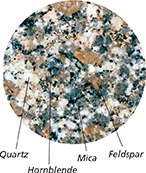Figure 7 This portrait of Abraham Lincoln on Mt. Rushmore in South Dakota was sculpted in a granite cliff.

Minerals and Rocks
Plants and soil cover much of Earth's land surface. Beneath the plants and soil, however, is a layer of solid rock. You can see this rock where it is exposed on mountains and canyons, or where a highway cuts through a hillside. What is this material? A rock is a solid combination of minerals or mineral materials.  A mineral is a naturally occurring, inorganic solid with a crystal structure and a characteristic chemical composition.
A mineral is a naturally occurring, inorganic solid with a crystal structure and a characteristic chemical composition.
Minerals are naturally occurring, which means they are made either geologically or biologically, but not artificially by humans. The term inorganic means that minerals are formed primarily of compounds other than carbon and hydrogen, even though these elements may be present. Minerals are also solid, and so while ice is a mineral, water is not.
Each mineral is a unique substance with its own chemical composition and crystal structure. For most minerals, the proportion of elements can vary slightly while the mineral still retains a similar set of characteristics. Within each mineral crystal, the chemical composition is nearly constant.
Minerals are the building blocks of rocks. Only a fraction of the more than 4000 known minerals are common. These common minerals are called the rock-forming minerals because they make up most of Earth's rocks. For example, granite is made up of the rock-forming minerals quartz, feldspar, mica, and hornblende. If you were to look closely at a piece of granite like that in Figure 8, you would see that it is made up of different-colored particles. Each particle is a separate mineral crystal. As you learned in chemistry, a crystal is a solid in which atoms are arranged in a regular repeating pattern.
Figure 8 A magnified view reveals the individual crystals of the minerals that make up granite.


What does it mean to say that a mineral is inorganic?





